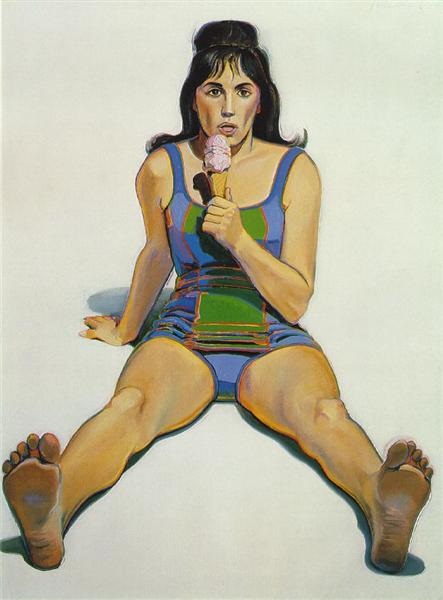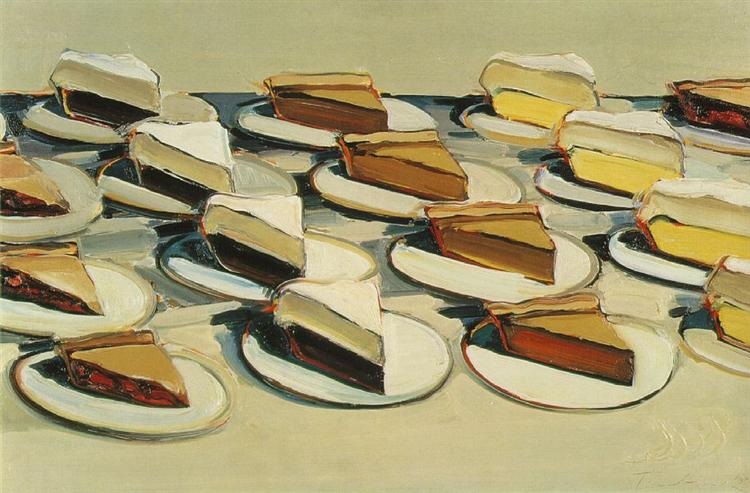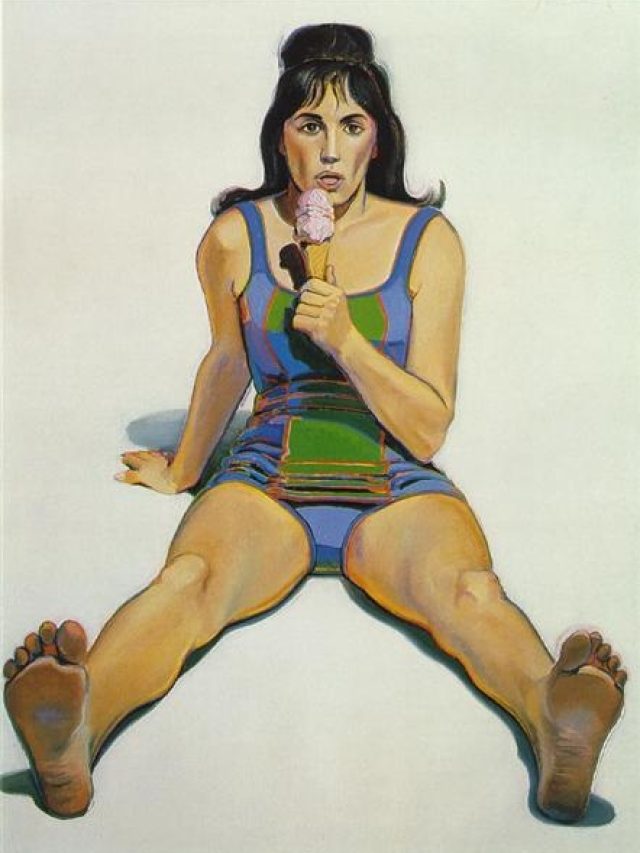Renowned for his vivid portrayals of commonplace items, Wayne Thiebaud has carved out a special place in the art world with his unusual paintings. Wayne Thiebaud’s work creates visual delights rich in colour and texture, from the seductive charm of his cakes and cupcakes to his evocative landscapes and ice cream cone paintings. This article honours Wayne Thiebaud’s efforts as a painter and printmaker while delving into his enchanted artistic universe. Thiebaud’s creative breakthrough occurred during a pivotal time in American art history, specifically the years following World War II. The pop art movement aimed to close the gap between high art and popular culture, and the growing interest in abstract expressionism defined this era.
The Artistic Journey of Wayne Thiebaud
Throughout the late 1940s and 1950s, Thiebaud’s sense of colour, composition, and subject matter reflected the dynamic cultural climate of California and the nation. His choice of subject matter—objects like pies, cakes, and commonplace items that evoke the home’s charm—distinguished him from traditional modernist influences even though he captured the essence of American life, including themes of consumerism and the celebration of the banal.
Wayne Thiebaud’s depiction of basic joys is among his most charming artistic features. For example, his cake paintings evoke feelings of pleasure and reminiscence rather than being merely images. The Wayne Thiebaud cake paintings and cupcake series are particularly well-liked, which give the canvas a light-hearted yet thought-provoking viewpoint. Wayne Thiebaud’s paintings are not just about food. Through exaggerated perspectives and vivid colour palettes, his cityscapes and landscapes portray the many settings of California, showcasing his unique yet equally compelling talent. Wayne Thiebaud’s landscape paintings provide a new perspective on well-known locales, whether the serene Sacramento River Valley or the steep streets of San Francisco.

Thiebaud’s choice of subjects contributes to his affiliation with the pop art movement. His artwork showed mass-produced objects that embodied the rising consumer culture in the United States in the 1950s and 1960s. However, in contrast to many pop painters, such as Andy Warhol, who took inspiration from commercial imagery, Thiebaud painted directly from life, using thick coats of paint to delve deeper into the forms and textures of his subjects.
Significance in the Art World
Wayne Thiebaud’s contribution to the art world goes beyond his direct influence on modern artists; it is found in his capacity to raise ordinary objects to high art, changing how art and daily life interact. Several crucial features underscore his artistic relevance. Initially, Thiebaud questioned what qualified as art and promoted a new viewpoint on consumer items. He encourages viewers to consider the aesthetics of daily life and the emotional bonds people have with food by using methods typically associated with fine art to portray commonplace objects.
Furthermore, Thiebaud’s use of texture and colour evokes feelings that cut through the superficiality of commercial society. His paintings are more than just depictions; they are emotional works honouring indulgent moments and recollections of cosy home environments. This enables his art to function as a vehicle for introspection and encourages viewers to relate it to their experiences. The way current painters embrace nostalgia and include whimsical aspects indicates Thiebaud’s impact. His focus on depth and colour has inspired other artists who want to tackle related subjects. Thiebaud’s work combines figuration and abstraction, paving the way for different generations of artists to play with both genres.
Artistic Philosophy
Wayne Thiebaud’s ideas about representation and the artist’s role are fundamental to his aesthetic philosophy. He feels that commonplace things should be elevated by art and the arts of life that are sometimes disregarded. Thiebaud’s belief that beauty may be found in the ordinary is evident in the subjects he depicts, mainly from the food and consumer goods industries. Thiebaud believes an artist’s job is to use creativity to curate and interpret their surroundings. He challenged accepted notions of realism, contending that representation needs emotional truth, not accuracy. Thiebaud’s method of application, which combines heavy, textured strokes with colour and subtle manipulation, expresses subjective experience.
Thiebaud’s philosophy thus touches on topics common in Western art, especially the notion that art reflects reality and reinterprets it according to the individual artist’s vision. He believes that art is an intimate conversation between the artist and the viewer, as evidenced by his emphasis on the personal interpretation of seemingly unimportant issues. The emotions expressed by Thiebaud and his affinity for the commonplace are profoundly ingrained in American culture. By emphasising commonplace events, such as savouring a piece of cake or becoming enthralled with a bakery exhibit, he encourages viewers to interact deeply and discover beauty in their daily lives.

Thiebaud’s paintings’ aesthetics both express his philosophy and deepen the emotional bonds created by his creations. His aesthetic approach is characterised by three main elements: subject matter, composition, and colour. Bold, vibrant colours that convey joy and energy characterise Thiebaud’s colouring scheme. He regularly uses vivid pinks, yellows, and blues to highlight his subjects’ commonplace qualities. Thiebaud creates depth and vitality by contrasting and coordinating colour schemes, highlighting his figures’ three-dimensionality. This tactile element enables viewers to engage with his art viscerally and sensually, as though they are extending their hands to touch the magical cakes and pastries he depicts.
His use of thick paint applications, which frequently resemble whipped frosting, makes his paintings surreal. Every intentional brushstroke is filled with excitement, converting inanimate objects into vivid pieces of beauty. By bridging the gap between food as a consumable product and a subject worthy of celebration, his artistic approach enables viewers to engage with his subjects on a deeper level.
In Thiebaud’s art, composition is crucial to creating balance. His compositions draw the viewer’s gaze into the canvas by using explicit and implicit lines to guide the viewer’s attention across the picture. His designs use simple, geometric outlines that give the exhibition structure and draw the viewer to examine the expertly arranged pieces. Furthermore, Thiebaud commonly depicts his themes from high perspectives, which adds nuance and complexity. This angle engages viewers with his paintings, enhancing their sensory experience and encouraging them to notice the little details in the compositions.
Conclusion
Wayne Thiebaud’s creative path embodies a combination of aesthetics, philosophy, history, and significance. He asks spectators to discover beauty in the commonplace as he muses on the relationship between art and commercial culture. Thiebaud transforms everyday objects into dramatic works of art that speak to viewers on various levels through his vivid paintings. His continuing influence pushes modern artists to investigate the connections between art, culture, and everyday life. Wayne Thiebaud is still revered in American art, and his legacy emphasises how art can communicate life’s basic joys and emotional truths. Using his deft methods and poignant portrayals, he honours the beauty of the commonplace, cultivating a legacy that forces us to recognise the little moments that make life more meaningful.






